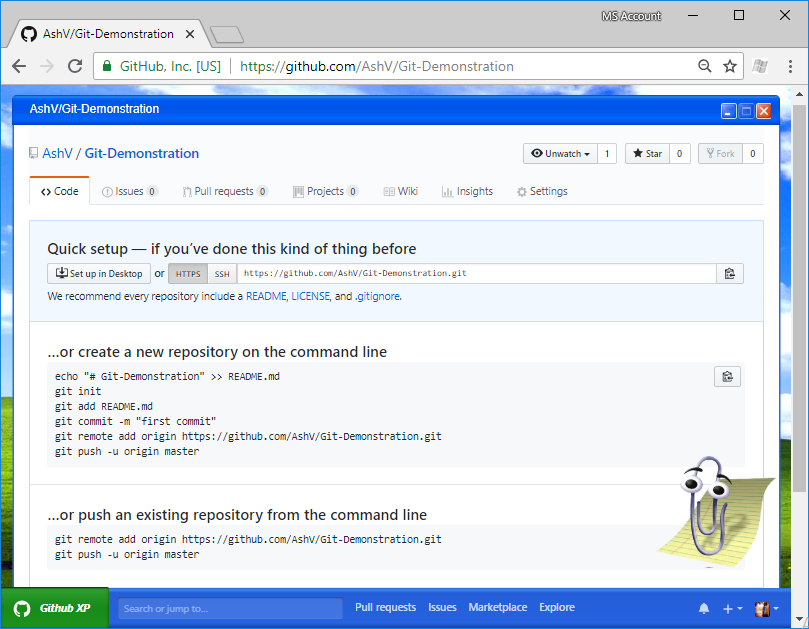

This time, file4 is pushed to the remote by local A:
Git add remote url to local repository update#
If we want to update local B from remote, we do: In this section we'll see how we can resolve conflicts during fetch, pull, and merge. commit modified file4 by local AĬONFLICT (content): Merge conflict in file4Īutomatic merge failed fix conflicts and then commit the result. $ git commit -m "commit modified file4 by local A"

However, we still can see the difference between staging area and HEAD:Īfter a commit, we can't see the difference between staging area and HEAD:

We can see the difference between the file at the working directory and at the staging area:īut once we put the file into the staging area, we do not see the difference between working tree and staging area: Picture from How do I show the changes which have been staged?. Suppose we made a change to a file, file4 at Local A: We first ran git fetch origin to tell Git to fetch down all the data it has that we do not, then we ran git merge origin/master to merge into our current branch anything new we see on the server. Remote: Total 3 (delta 0), reused 0 (delta 0) Remote: Compressing objects: 100% (2/2), done. Suppose, the remote has been updated by adding file3. We need to use merge command as well as shown below. In other words, the fetch alone cannot do update. Because this is not the default configured remoteįor your current branch, you must specify a branch on the command line.Ī fetch command does not make any changes to local branches, so we will need to merge a remote branch with a paired local branch to incorporate newly fetch changes.

You asked to pull from the remote 'origin', but did not specifyĪ branch. Now, I (at local A) can get the updates using pull: The changes been made to the remote repository by the push command is shown in the picture below:Īnother team member at local (B) updates the remote using push: Once this is executed, all the stuff that we last synchronised with origin will be sent to the remote repository and other people will be able to see them there. The git push origin master command says "push the commits in the local branch named master to the remote named origin". Let's try it by initially pushing our master branch to the new origin remote we created earlier: Since we've already setup the remote alias via git remote add origin URI, in our push command, we can just push to origin instead of typing out the whole URI. To do this, we run git push which will attempt to make our the new on the remote. To share the commit we've done, we need to push our changes to the remote repository. Note that we must have an existing git repo to use this.Īs we'll see later, unlike the git remote add, the git clone creates a new git repository by copying an existing one located at the URI we specify. $ git remote add origin just created an entry in our git config that specifies a name for a particular URL via git remote add. It is a repository other than the one on our local machine which we can push our changes into (so that other people can see them) or pull from (so that we can get others changes). To communicate with the outside world, git uses what is called remote. In similar way you can pull changes of the others from from the remote repository to your local repository and then integrate the changes into your workspace.The git is a distributed version control system. They can pull your changes from the remote repository to their local repository and then integrate the changes into their workspaces. From this moment, your changes are visible to people who have access to the remote repository. Once you decide it's a good time to share the changes, you push the changes from your local repository to the remote repository. This can be done even when you are disconnected from the internet and nobody else can see the changes in your local repository. When you are finished with doing changes into your workspace, you can add them to staging area and from there you can commit the changes to your local repository. The remote repository is usually used by teams as a central repository into which everyone pushes the changes from his local repository and from which everyone pulls changes to his local repository. The remote repository is a Git repository that is stored on some remote computer. The local repository is a Git repository that is stored on your computer.


 0 kommentar(er)
0 kommentar(er)
